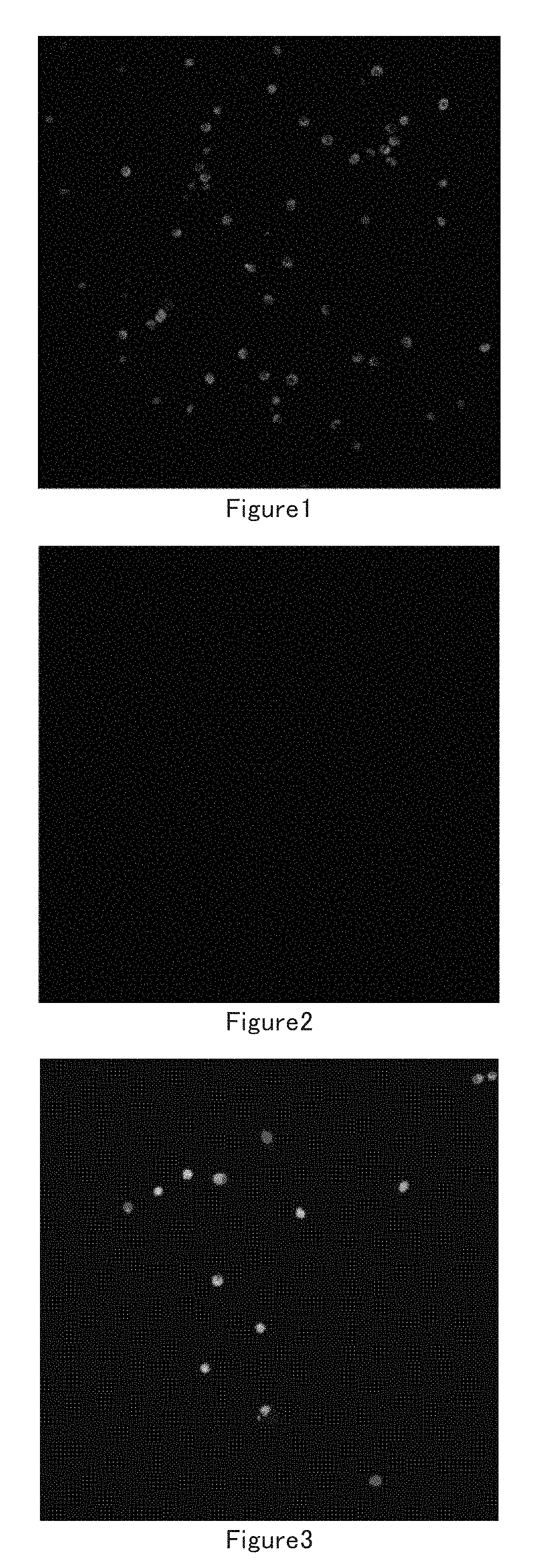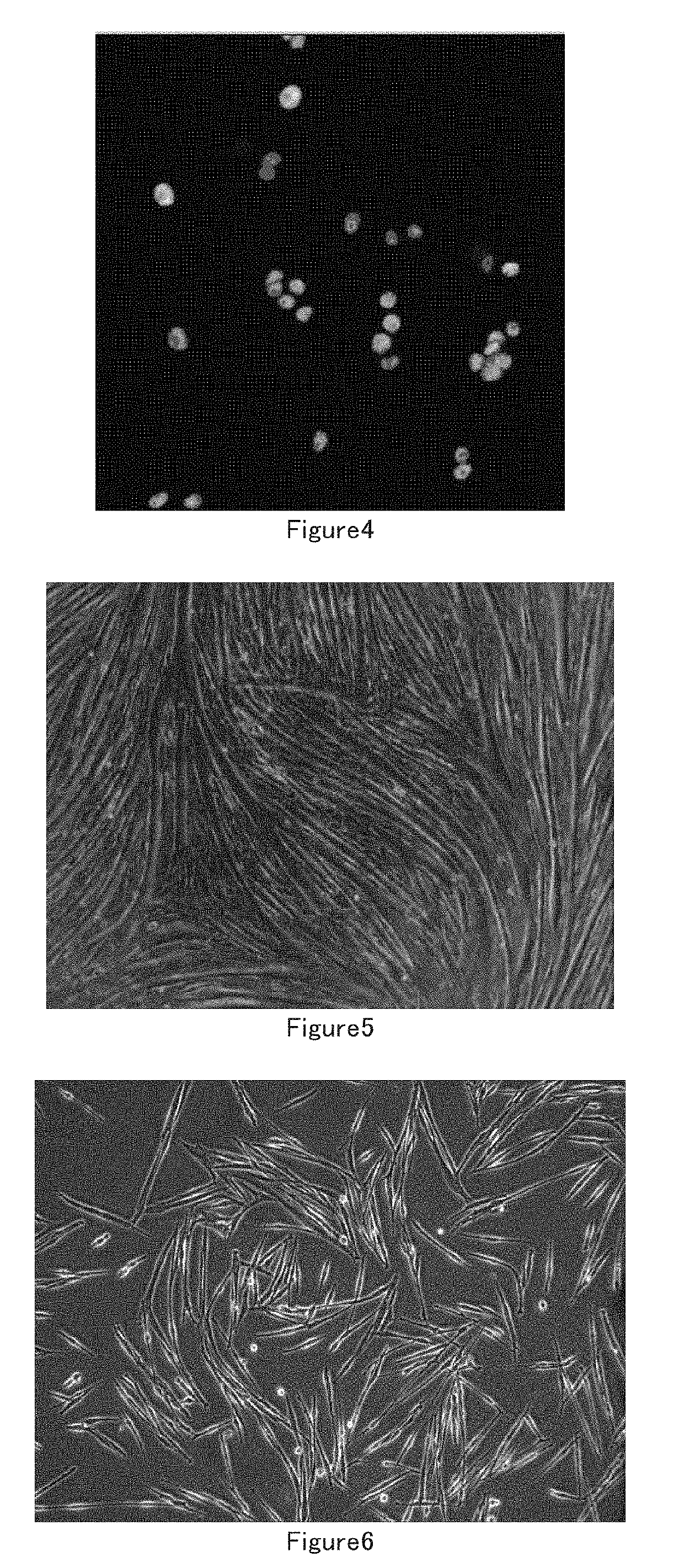Muscle stem cell in vitro culture method and application
a muscle stem cell and in vitro culture technology, applied in the field of biotechnology and medical science, can solve the problems of inability to detect muscle stem cell molecular markers in these progenitor cells, application of muscle stem cells in clinics, and lack of method to support long-term muscle stem cell culturing in vitro, so as to achieve the effect of greatly improving the number of stem cells for regenerative medicine therapy
- Summary
- Abstract
- Description
- Claims
- Application Information
AI Technical Summary
Benefits of technology
Problems solved by technology
Method used
Image
Examples
example 1
on of Mouse T Cell Conditional Medium
[0080]Sacrificed the wild type C57 / B6 mice and harvested spleens. Wet the spleen with 2-3 ml PBS, milled the spleen, and filtered through 70 μm filter after an appropriate amount of PBS was added, the cell suspension was harvested. Centrifugated at 1000 rpm for 5 minutes, the supernatant was discarded. 5 ml of red cell lysis buffer was added to resuspend the cell. 5 ml of PRMI-1640 medium was added. The cell debris was removed by filtering through a filter mesh. Centrifugated at 1000 rpm for 5 minutes to collect cells. The cells were washed with PRMI-1640 medium twice, the cell density was regulated to 1×109 cells / L. The cells were seeded to cell culture bottles, ConA was added at a final concentration of 5 mg / L, and incubated at 37° C. in the CO2 incubator for 48 hours, equal volume of PRMI-1640 medium was added and incubated for 24 hours, centrifugated at 3000 rpm for 5 minutes. Transferred the cell supernatant to fresh tubes and stored at −80°...
example 2
nd Detection of Muscle Stem Cell
[0097]1) Isolate Muscle Stem Cells
[0098]Mouse muscle stem cells: Several 3 day old new born mice were sacrificed, muscles from the limbs were harvested and put into DMEM medium containing 0.2% D-type collagenase, digested at 37° C. for 1.5 hours. The muscle tissues were washed with PBS 3 times after digestion and collected by natural sedimentation for several minutes every time. The collected muscles were trituated by blowing and sucking with Pasteu pipettes and 18 Gauge needles for several times until the muscle tissues were dispersed. The non-muscle impurity was removed by filtrating through a 40 um filter. The filtrate was centrifugated at 1000 rpm for 5 minutes, the pellet was resuspended in F10 medium and seeded in 10 cm dishes, the suspension was transferred to 10 cm dishes covered with 0.05% I-type collagen 3 hours later, 5 ng / ml FGF cytokine was added at the same time, incubated overnight at 37° C. in CO2 incubator. The next day, the muscle ce...
PUM
| Property | Measurement | Unit |
|---|---|---|
| concentration | aaaaa | aaaaa |
| concentration | aaaaa | aaaaa |
| concentration | aaaaa | aaaaa |
Abstract
Description
Claims
Application Information
 Login to View More
Login to View More - R&D
- Intellectual Property
- Life Sciences
- Materials
- Tech Scout
- Unparalleled Data Quality
- Higher Quality Content
- 60% Fewer Hallucinations
Browse by: Latest US Patents, China's latest patents, Technical Efficacy Thesaurus, Application Domain, Technology Topic, Popular Technical Reports.
© 2025 PatSnap. All rights reserved.Legal|Privacy policy|Modern Slavery Act Transparency Statement|Sitemap|About US| Contact US: help@patsnap.com



